Spring Cloud - 开发环境搭建
1、JDK环境安装
1、下载jdk17:下载地址,在下图中红色框部分进行下载
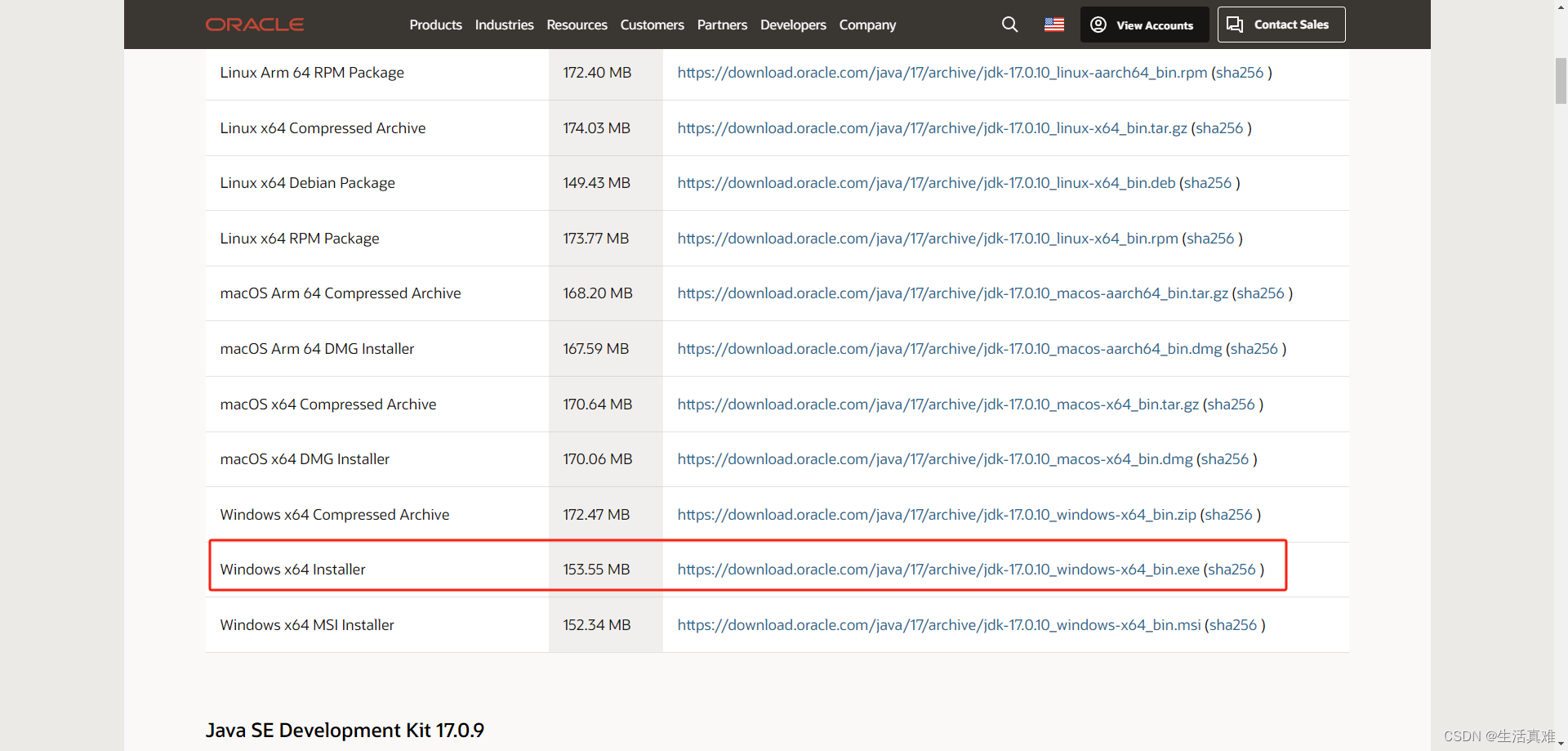
2、双击安装,基本都是下一步直到完成。
3、设置系统环境变量:参考

4、设置JAVA_HOME环境变量

5、在PATH中添加%JAVA_HOME%/bin
6、在命令行中执行:java -version,如下图则安装成功

2、MAVEN环境
1、官网下载地址:maven
2、下载后解压到某个文件夹下
3、配置maven的环境变量
4、验证:mvn -v

3、安装Elicpse
1、下载地址: 官网地址
2、解压到某个文件夹即可。
4、配置mvn的xml
注意:
1、该文件在开发环境不变的情况下,不建议每个项目一个,而是多个项目使用一个
2、下载文件较多,占用的磁盘比较大
配置步骤:
1、新建settings.xml,内容如下:
需要需改文件中的存储路径《E:\javaProject\repos》,根据个人需要修改
<?xml version="1.0" encoding="UTF-8"?><!-- Licensed to the Apache Software Foundation (ASF) under one or more contributor license agreements. See the NOTICE file distributed with this work for additional information regarding copyright ownership. The ASF licenses this file to you under the Apache License, Version 2.0 (the "License"); you may not use this file except in compliance with the License. You may obtain a copy of the License at http://www.apache.org/licenses/LICENSE-2.0 Unless required by applicable law or agreed to in writing, software distributed under the License is distributed on an "AS IS" BASIS, WITHOUT WARRANTIES OR CONDITIONS OF ANY KIND, either express or implied. See the License for the specific language governing permissions and limitations under the License. --><!-- | This is the configuration file for Maven. It can be specified at two levels: | | 1. User Level. This settings.xml file provides configuration for a single user, | and is normally provided in ${user.home}/.m2/settings.xml. | | NOTE: This location can be overridden with the CLI option: | | -s /path/to/user/settings.xml | | 2. Global Level. This settings.xml file provides configuration for all Maven | users on a machine (assuming they're all using the same Maven | installation). It's normally provided in | ${maven.conf}/settings.xml. | | NOTE: This location can be overridden with the CLI option: | | -gs /path/to/global/settings.xml | | The sections in this sample file are intended to give you a running start at | getting the most out of your Maven installation. Where appropriate, the default | values (values used when the setting is not specified) are provided. | | -->
<settings xmlns="http://maven.apache.org/SETTINGS/1.0.0"xmlns:xsi="http://www.w3.org/2001/XMLSchema-instance"xsi:schemaLocation="http://maven.apache.org/SETTINGS/1.0.0 http://maven.apache.org/xsd/settings-1.0.0.xsd"><!-- localRepository | The path to the local repository maven will use to store artifacts. | | Default: ${user.home}/.m2/repository <localRepository>/path/to/local/repo</localRepository> --><localRepository>E:\javaProject\repos</localRepository><!-- interactiveMode | This will determine whether maven prompts you when it needs input. If set to false, | maven will use a sensible default value, perhaps based on some other setting, for | the parameter in question. | | Default: true <interactiveMode>true</interactiveMode> --><!-- offline | Determines whether maven should attempt to connect to the network when executing a build. | This will have an effect on artifact downloads, artifact deployment, and others. | | Default: false <offline>false</offline> --><!-- pluginGroups | This is a list of additional group identifiers that will be searched when resolving plugins by their prefix, i.e. | when invoking a command line like "mvn prefix:goal". Maven will automatically add the group identifiers | "org.apache.maven.plugins" and "org.codehaus.mojo" if these are not already contained in the list. | --><pluginGroups><!-- pluginGroup | Specifies a further group identifier to use for plugin lookup. <pluginGroup>com.your.plugins</pluginGroup> --></pluginGroups><!-- proxies | This is a list of proxies which can be used on this machine to connect to the network. | Unless otherwise specified (by system property or command-line switch), the first proxy | specification in this list marked as active will be used. | --><proxies><!-- proxy | Specification for one proxy, to be used in connecting to the network. | <proxy> <id>optional</id> <active>true</active> <protocol>http</protocol> <username>proxyuser</username> <password>proxypass</password> <host>proxy.host.net</host> <port>80</port> <nonProxyHosts>local.net|some.host.com</nonProxyHosts> </proxy> --></proxies><!-- servers | This is a list of authentication profiles, keyed by the server-id used within the system. | Authentication profiles can be used whenever maven must make a connection to a remote server. | --><servers><!-- server | Specifies the authentication information to use when connecting to a particular server, identified by | a unique name within the system (referred to by the 'id' attribute below). | | NOTE: You should either specify username/password OR privateKey/passphrase, since these pairings are | used together. | <server> <id>deploymentRepo</id> <username>repouser</username> <password>repopwd</password> </server> --><!-- Another sample, using keys to authenticate. <server> <id>siteServer</id> <privateKey>/path/to/private/key</privateKey> <passphrase>optional; leave empty if not used.</passphrase> </server> --></servers><!-- mirrors | This is a list of mirrors to be used in downloading artifacts from remote repositories. | | It works like this: a POM may declare a repository to use in resolving certain artifacts. | However, this repository may have problems with heavy traffic at times, so people have mirrored | it to several places. | | That repository definition will have a unique id, so we can create a mirror reference for that | repository, to be used as an alternate download site. The mirror site will be the preferred | server for that repository. | --><mirrors><!-- mirror | Specifies a repository mirror site to use instead of a given repository. The repository that | this mirror serves has an ID that matches the mirrorOf element of this mirror. IDs are used | for inheritance and direct lookup purposes, and must be unique across the set of mirrors. | <mirror> <id>mirrorId</id> <mirrorOf>repositoryId</mirrorOf> <name>Human Readable Name for this Mirror.</name> <url>http://my.repository.com/repo/path</url> </mirror> --><mirror><id>nexus-aliyun</id><name>nexus-aliyun</name><url>https://maven.aliyun.com/repository/public</url><mirrorOf>central</mirrorOf></mirror></mirrors><!-- profiles | This is a list of profiles which can be activated in a variety of ways, and which can modify | the build process. Profiles provided in the settings.xml are intended to provide local machine- | specific paths and repository locations which allow the build to work in the local environment. | | For example, if you have an integration testing plugin - like cactus - that needs to know where | your Tomcat instance is installed, you can provide a variable here such that the variable is | dereferenced during the build process to configure the cactus plugin. | | As noted above, profiles can be activated in a variety of ways. One way - the activeProfiles | section of this document (settings.xml) - will be discussed later. Another way essentially | relies on the detection of a system property, either matching a particular value for the property, | or merely testing its existence. Profiles can also be activated by JDK version prefix, where a | value of '1.4' might activate a profile when the build is executed on a JDK version of '1.4.2_07'. | Finally, the list of active profiles can be specified directly from the command line. | | NOTE: For profiles defined in the settings.xml, you are restricted to specifying only artifact | repositories, plugin repositories, and free-form properties to be used as configuration | variables for plugins in the POM. | | --><profiles><!-- profile | Specifies a set of introductions to the build process, to be activated using one or more of the | mechanisms described above. For inheritance purposes, and to activate profiles via <activatedProfiles/> | or the command line, profiles have to have an ID that is unique. | | An encouraged best practice for profile identification is to use a consistent naming convention | for profiles, such as 'env-dev', 'env-test', 'env-production', 'user-jdcasey', 'user-brett', etc. | This will make it more intuitive to understand what the set of introduced profiles is attempting | to accomplish, particularly when you only have a list of profile id's for debug. | | This profile example uses the JDK version to trigger activation, and provides a JDK-specific repo. <profile> <id>jdk-1.4</id> <activation> <jdk>1.4</jdk> </activation> <repositories> <repository> <id>jdk14</id> <name>Repository for JDK 1.4 builds</name> <url>http://www.myhost.com/maven/jdk14</url> <layout>default</layout> <snapshotPolicy>always</snapshotPolicy> </repository> </repositories> </profile> --><!-- | Here is another profile, activated by the system property 'target-env' with a value of 'dev', | which provides a specific path to the Tomcat instance. To use this, your plugin configuration | might hypothetically look like: | | ... | <plugin> | <groupId>org.myco.myplugins</groupId> | <artifactId>myplugin</artifactId> | | <configuration> | <tomcatLocation>${tomcatPath}</tomcatLocation> | </configuration> | </plugin> | ... | | NOTE: If you just wanted to inject this configuration whenever someone set 'target-env' to | anything, you could just leave off the <value/> inside the activation-property. | <profile> <id>env-dev</id> <activation> <property> <name>target-env</name> <value>dev</value> </property> </activation> <properties> <tomcatPath>/path/to/tomcat/instance</tomcatPath> </properties> </profile> --></profiles><!-- activeProfiles | List of profiles that are active for all builds. | <activeProfiles> <activeProfile>alwaysActiveProfile</activeProfile> <activeProfile>anotherAlwaysActiveProfile</activeProfile> </activeProfiles> -->
</settings>
2、打开Eclipse-->window->perferences

3、配置java环境变量
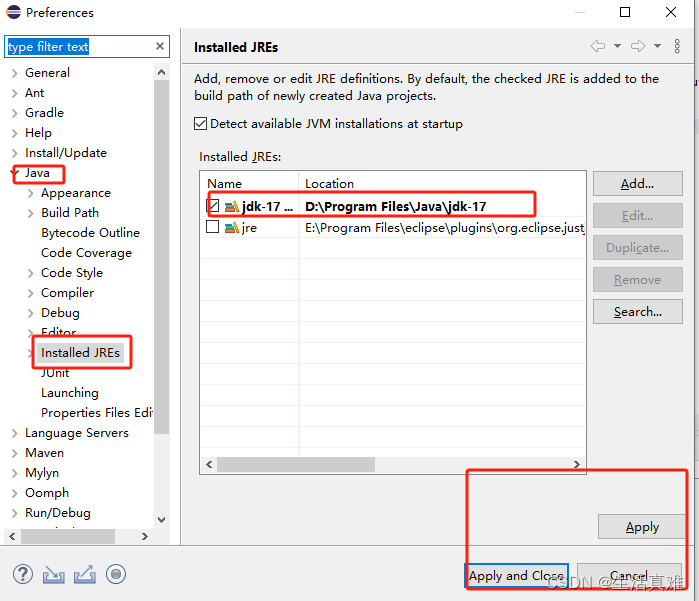
5、总结
如无法安装,可以咨询。或者在评论区讨论。大家共同学习
相关文章:

Spring Cloud - 开发环境搭建
1、JDK环境安装 1、下载jdk17:下载地址,在下图中红色框部分进行下载 2、双击安装,基本都是下一步直到完成。 3、设置系统环境变量:参考 4、设置JAVA_HOME环境变量 5、在PATH中添加%JAVA_HOME%/bin 6、在命令行中执行:j…...

绘制图形
自学python如何成为大佬(目录):https://blog.csdn.net/weixin_67859959/article/details/139049996?spm1001.2014.3001.5501 在前3节的实例中,我们一直绘制的都是直线,实际上,海龟绘图还可以绘制其他形状的图形,如圆形、多边形等…...

SpringAop实战(xml文件/纯注解两种方式)
AOP的概述 什么是AOP? 在软件业,AOP为Aspect Oriented Programming的缩写,意为:面向切面编程 • AOP是一种编程范式,隶属于软工范畴,指导开发者如何组织程序结构 • AOP最早由AOP联盟的组织提出的,制定了…...
Linux的进程与线程)
(八)Linux的进程与线程
多任务处理是指用户可以在同一时间内运行多个应用程序,每个正在执行的程序被称为一个任务。一个任务包含一个或多个完成独立功能的子任务,其中子任务可以是进程或线程。Linux就是一个支持多任务的操作系统,比起单任务系统它的功能增强许多。 一.进程 进程:一个具有独立功…...
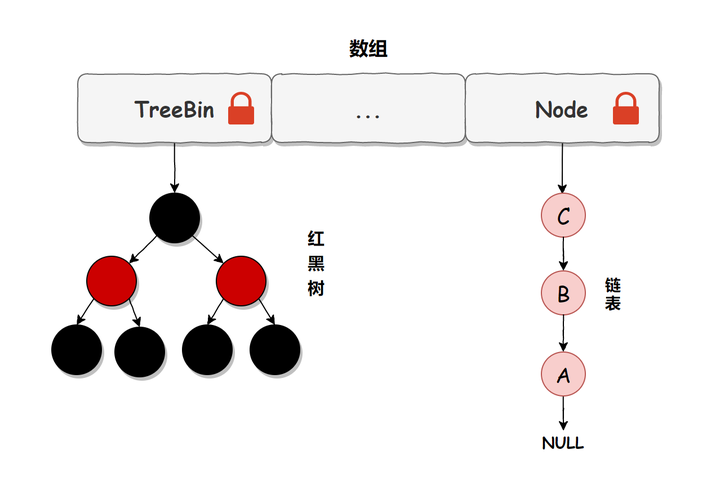
Map-JAVA面试常问
1.HashMap底层实现 底层实现在jdk1.7和jdk1.8是不一样的 jdk1.7采用数组加链表的方式实现 jdk1.8采用数组加链表或者红黑树实现 HashMap中每个元素称之为一个哈希桶(bucket),哈希桶包含的内容有以下4项 hash值(哈希函数计算出来的值) Key value next(…...
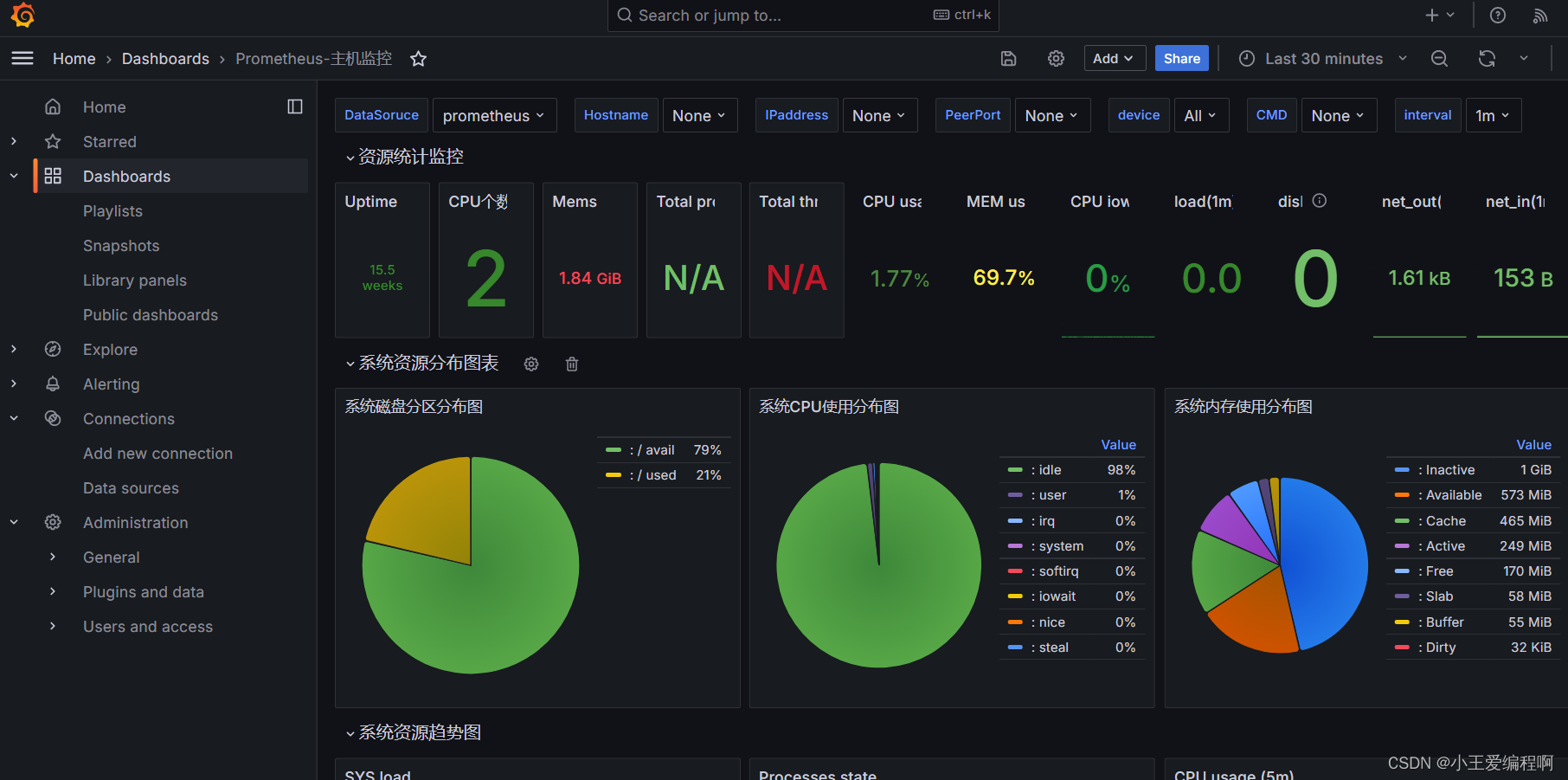
prometheus+grafana搭建监控系统
1.prometheus服务端安装 1.1下载包 使用wget下载 (也可以直接去官网下载包Download | Prometheus) wget https://github.com/prometheus/prometheus/releases/download/v2.44.0/prometheus-2.44.0.linux-amd64.tar.gz1.2解压 tar xf prometheus-2.44…...

flink学习-flink sql
动态表 在flink的数据处理中,数据流是源源不断的,是无界的,所以对于flink处理的数据表是一张动态表,所以对于动态表的查询也是持续的,每接收一条新数据会进行一次新的查询。 持续查询 因为数据在一直源源不动的到来…...

高考填报志愿攻略,5个步骤选专业和院校
在高考完毕出成绩的时候,很多人会陷入迷茫中,好像努力了这么多年,却不知道怎么规划好未来。怎么填报志愿合适?在填报志愿方面有几个内容需要弄清楚,按部就班就能找到方向,一起来了解一下正确的步骤吧。 第…...

Kubernetes排错(十)-处理容器数据磁盘被写满
容器数据磁盘被写满造成的危害: 不能创建 Pod (一直 ContainerCreating)不能删除 Pod (一直 Terminating)无法 exec 到容器 如何判断是否被写满? 容器数据目录大多会单独挂数据盘,路径一般是 /var/lib/docker,也可能是 /data/docker 或 /o…...

使用QtGui显示QImage的几种方法
问题描述 我是一名刚学习Qt的新手,正在尝试创建一个简单的GUI应用程序。当点击一个按钮时,显示一张图片。我可以使用QImage对象读取图片,但是否有简单的方法调用一个Qt函数,将QImage作为输入并显示它? 方法一:使用QLabel显示QImage 最简单的方式是将QImage添加到QLabe…...

C++ lamda
1 lamada 的函数指针存在哪里?需要通过分析编译后的二进制; 2 捕获了什么? 为什么捕获?捕获的范围是什么? 捕获的生命周期是什么? lambda 定义匿名函数,使得代码更加灵活简洁; lam…...
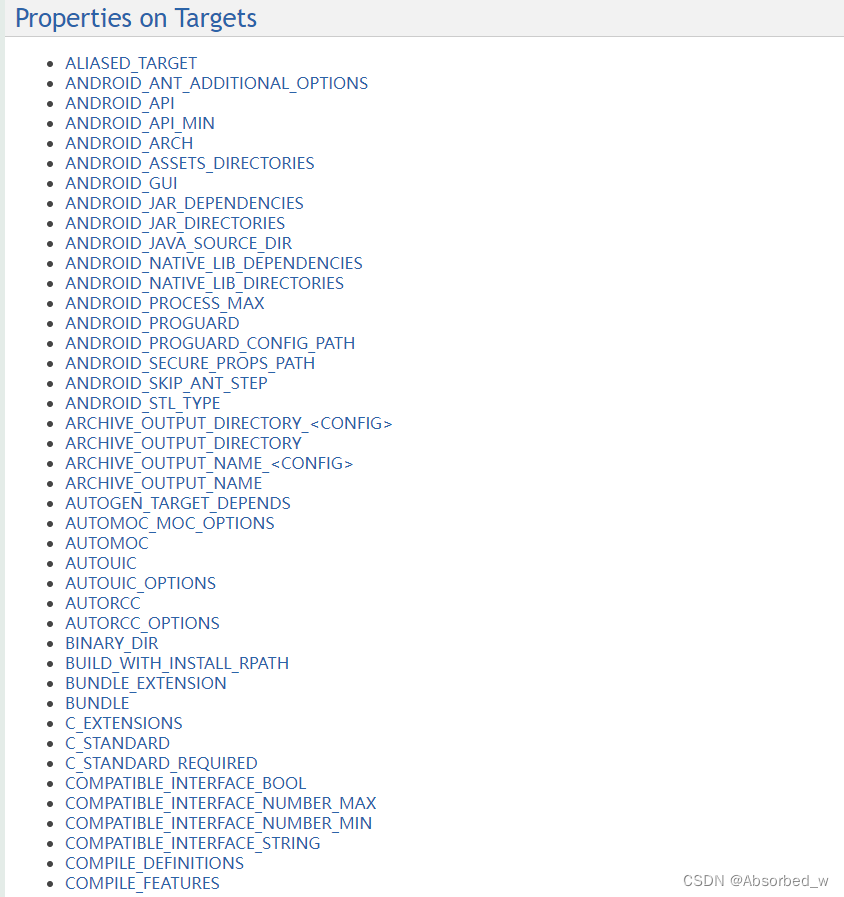
Linux_应用篇(27) CMake 入门与进阶
在前面章节内容中,我们编写了很多示例程序,但这些示例程序都只有一个.c 源文件,非常简单。 所以,编译这些示例代码其实都非常简单,直接使用 GCC 编译器编译即可,连 Makefile 都不需要。但是,在实…...

51单片机STC89C52RC——8.1 8*8 LED点阵模块(点亮一个LED)
目录 目的/效果 一,STC单片机模块 二,8*8 LED点阵模块 2.1 电路图 2.1.1 8*8 点阵模块电路图 2.1.2 74HC595(串转并)模块 电路图 2.1.3 芯片引脚 2.2 引脚电平分析 2.3 74HC595 串转并模块 2.3.1 装弹(移位…...

2024最新免费版轻量级Navicat Premium Lite 下载和安装教程
2024最新免费版轻量级Navicat Premium Lite 下载和安装教程 关于猫头虎 大家好,我是猫头虎,别名猫头虎博主,擅长的技术领域包括云原生、前端、后端、运维和AI。我的博客主要分享技术教程、bug解决思路、开发工具教程、前沿科技资讯、产品评…...

PHP+laravel 生成word
此功能较为繁琐我会从源头讲起 首先是数据库设置,下面是我的数据库结构 合同模版表 CREATE TABLE contract_tpl (id bigint unsigned NOT NULL AUTO_INCREMENT,name varchar(191) COLLATE utf8_unicode_ci DEFAULT NULL COMMENT 合同名称,file varchar(191) COLL…...
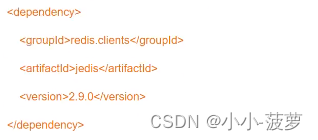
redis集群简单介绍及其搭建过程
Redis集群 1、哨兵模式 哨兵可以有多个,从服务器也可以有多个,从服务器也可以有多个,在Redis3.0以前的版本要实现集群一般是借助哨兵sentinel工具来监控master节点的状态,如果master节点异常,则会实现主从切换&#x…...

linux桌面运维----第五天
1、创建用户命令useradd: 作用:创建用户 语法:useradd [选项名] 用户名 选项: -d<登入目录> 指定用户登入时的起始目录。 【掌握】 -g<群组> 指定用户所属的群组(基本组)。【掌握】…...
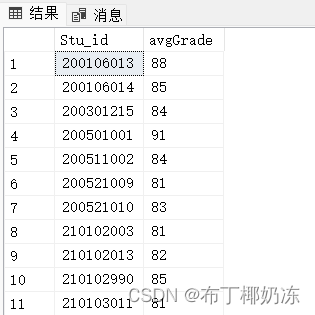
【SQL Server数据库】简单查询
目录 用SQL语句完成下列查询。使用数据库为SCHOOL数据库 1. 查询学生的姓名、性别、班级名称,并把结果存储在一张新表中。 2. 查询男生的资料。 3. 查询所有计算机系的班级信息。 4.查询艾老师所教的课程号。 5. 查询年龄小于30岁的女同学的学号和姓名。…...

Docker 从入门到精通(大全)
一、概述 1.1 基本概念 Docker 是一个开源的应用容器引擎,基于 Go 语言 并遵从 Apache2.0 协议开源。 Docker 可以让开发者打包他们的应用以及依赖包到一个轻量级、可移植的容器中,然后发布到任何流行的 Linux 机器上,也可以实现虚拟化。…...

基于JSP的在线教育资源管理系统
开头语: 你好呀,我是计算机学长猫哥!如果你对在线教育资源管理系统感兴趣或者有相关需求,欢迎在文末找到我的联系方式。 开发语言:Java 数据库:MySQL 技术:JSP技术 工具:IDE、N…...
)
uniapp 对接腾讯云IM群组成员管理(增删改查)
UniApp 实战:腾讯云IM群组成员管理(增删改查) 一、前言 在社交类App开发中,群组成员管理是核心功能之一。本文将基于UniApp框架,结合腾讯云IM SDK,详细讲解如何实现群组成员的增删改查全流程。 权限校验…...

CVPR 2025 MIMO: 支持视觉指代和像素grounding 的医学视觉语言模型
CVPR 2025 | MIMO:支持视觉指代和像素对齐的医学视觉语言模型 论文信息 标题:MIMO: A medical vision language model with visual referring multimodal input and pixel grounding multimodal output作者:Yanyuan Chen, Dexuan Xu, Yu Hu…...
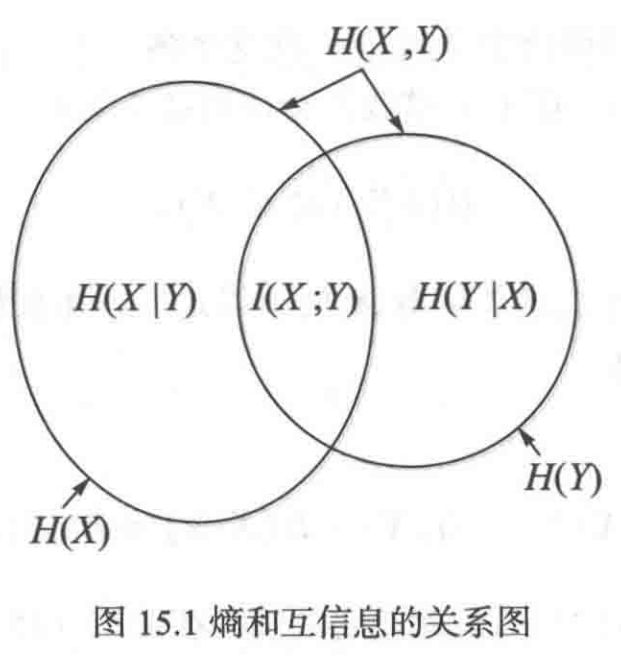
《通信之道——从微积分到 5G》读书总结
第1章 绪 论 1.1 这是一本什么样的书 通信技术,说到底就是数学。 那些最基础、最本质的部分。 1.2 什么是通信 通信 发送方 接收方 承载信息的信号 解调出其中承载的信息 信息在发送方那里被加工成信号(调制) 把信息从信号中抽取出来&am…...

微信小程序云开发平台MySQL的连接方式
注:微信小程序云开发平台指的是腾讯云开发 先给结论:微信小程序云开发平台的MySQL,无法通过获取数据库连接信息的方式进行连接,连接只能通过云开发的SDK连接,具体要参考官方文档: 为什么? 因为…...

汇编常见指令
汇编常见指令 一、数据传送指令 指令功能示例说明MOV数据传送MOV EAX, 10将立即数 10 送入 EAXMOV [EBX], EAX将 EAX 值存入 EBX 指向的内存LEA加载有效地址LEA EAX, [EBX4]将 EBX4 的地址存入 EAX(不访问内存)XCHG交换数据XCHG EAX, EBX交换 EAX 和 EB…...

使用 SymPy 进行向量和矩阵的高级操作
在科学计算和工程领域,向量和矩阵操作是解决问题的核心技能之一。Python 的 SymPy 库提供了强大的符号计算功能,能够高效地处理向量和矩阵的各种操作。本文将深入探讨如何使用 SymPy 进行向量和矩阵的创建、合并以及维度拓展等操作,并通过具体…...

Python 包管理器 uv 介绍
Python 包管理器 uv 全面介绍 uv 是由 Astral(热门工具 Ruff 的开发者)推出的下一代高性能 Python 包管理器和构建工具,用 Rust 编写。它旨在解决传统工具(如 pip、virtualenv、pip-tools)的性能瓶颈,同时…...
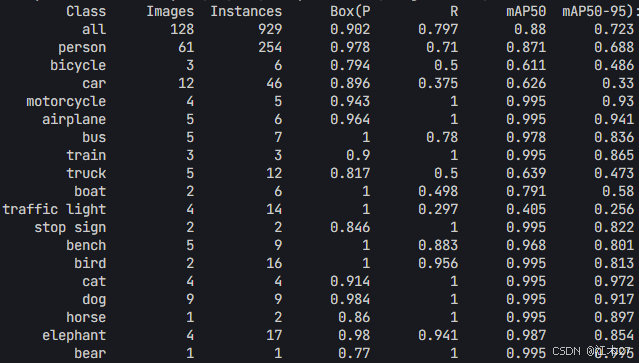
Yolov8 目标检测蒸馏学习记录
yolov8系列模型蒸馏基本流程,代码下载:这里本人提交了一个demo:djdll/Yolov8_Distillation: Yolov8轻量化_蒸馏代码实现 在轻量化模型设计中,**知识蒸馏(Knowledge Distillation)**被广泛应用,作为提升模型…...
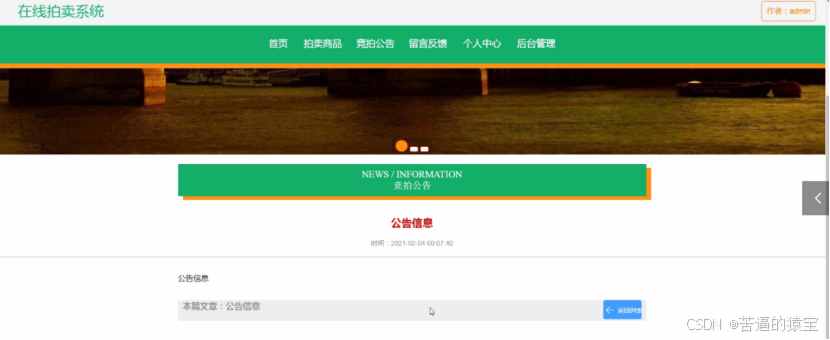
基于SpringBoot在线拍卖系统的设计和实现
摘 要 随着社会的发展,社会的各行各业都在利用信息化时代的优势。计算机的优势和普及使得各种信息系统的开发成为必需。 在线拍卖系统,主要的模块包括管理员;首页、个人中心、用户管理、商品类型管理、拍卖商品管理、历史竞拍管理、竞拍订单…...

【SSH疑难排查】轻松解决新版OpenSSH连接旧服务器的“no matching...“系列算法协商失败问题
【SSH疑难排查】轻松解决新版OpenSSH连接旧服务器的"no matching..."系列算法协商失败问题 摘要: 近期,在使用较新版本的OpenSSH客户端连接老旧SSH服务器时,会遇到 "no matching key exchange method found", "n…...
